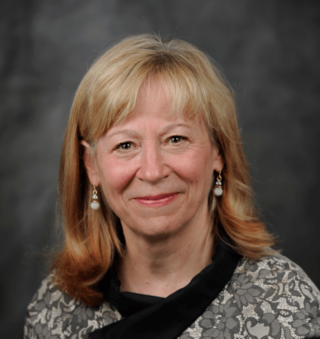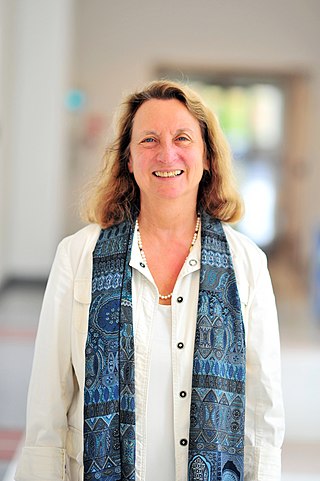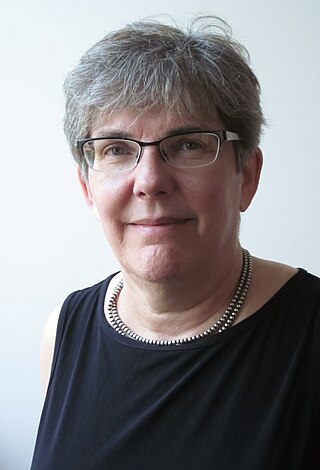
Michael Polanyi was a Hungarian-British polymath, who made important theoretical contributions to physical chemistry, economics, and philosophy. He argued that positivism is a false account of knowing.

Linus Carl Pauling was an American chemist, biochemist, chemical engineer, peace activist, author, and educator. He published more than 1,200 papers and books, of which about 850 dealt with scientific topics. New Scientist called him one of the 20 greatest scientists of all time. For his scientific work, Pauling was awarded the Nobel Prize in Chemistry in 1954. For his peace activism, he was awarded the Nobel Peace Prize in 1962. He is one of five people to have won more than one Nobel Prize. Of these, he is the only person to have been awarded two unshared Nobel Prizes, and one of two people to be awarded Nobel Prizes in different fields, the other being Marie Curie.

Dudley Robert Herschbach is an American chemist at Harvard University. He won the 1986 Nobel Prize in Chemistry jointly with Yuan T. Lee and John C. Polanyi "for their contributions concerning the dynamics of chemical elementary processes". Herschbach and Lee specifically worked with molecular beams, performing crossed molecular beam experiments that enabled a detailed molecular-level understanding of many elementary reaction processes. Herschbach is a member of the Board of Sponsors of the Bulletin of the Atomic Scientists.

Patrick Maynard Stuart Blackett, Baron Blackett was an English physicist who received the 1948 Nobel Prize in Physics. In 1925, he was the first person to prove that radioactivity could cause the nuclear transmutation of one chemical element to another. He also made major contributions to the Allied war effort in World War II, advising on military strategy and developing operational research.

John Charles Polanyi is a German-born Canadian chemist. He was awarded the 1986 Nobel Prize in Chemistry for his research in chemical kinetics.

Mildred Cohn was an American biochemist who furthered understanding of biochemical processes through her study of chemical reactions within animal cells. She was a pioneer in the use of nuclear magnetic resonance for studying enzyme reactions, particularly reactions of adenosine triphosphate (ATP).

Mary Lowe Good was an American inorganic chemist who worked academically, in industrial research and in government. Good contributed to the understanding of catalysts such as ruthenium which activate or speed up chemical reactions.
James Riddick Partington was a British chemist and historian of chemistry who published multiple books and articles in scientific magazines. His most famous works were An Advanced Treatise on Physical Chemistry and A History of Chemistry, for which he received the Dexter Award and the George Sarton Medal.

Oregon State University's College of Science is a public academic institution operating as a member of Oregon State University, a public research university. The college of science consists of seven schools, offering nine undergraduate programs and supporting seven doctoral-granting programs and eight master's degree-granting programs. The college also supports the science discipline colleges and bachelor of science students by offering key undergraduate science courses required by their own curriculums. The college of science claims more than 3,400 students and a faculty of 184. Sixteen faculty members are elected American Association for the Advancement of Science (AAAS) fellows.

Esther Marley Conwell was a pioneering American chemist and physicist, best known for the Conwell-Weisskopf theory that describes how electrons travel through semiconductors, a breakthrough that helped revolutionize modern computing. During her life, she was described as one of the most important women in science.

JoAnne Stubbe is an American chemist best known for her work on ribonucleotide reductases, for which she was awarded the National Medal of Science in 2009. In 2017, she retired as a professor of chemistry and biology at the Massachusetts Institute of Technology.
Angela K. Wilson is an American scientist and former (2022) President of the American Chemical Society. She currently serves as the John A. Hannah Distinguished Professor of Chemistry, associate dean for strategic initiatives in the College of Natural Sciences, and director of the MSU Center for Quantum Computing, Science, and Engineering (MSU-Q) at Michigan State University.
Mary Elvira Weeks was an American chemist and historian of science. Weeks was the first woman to receive a Ph.D. in chemistry at the University of Kansas and the first woman to be a faculty member there.

Geraldine Lee Richmond is an American chemist and physical chemist who is serving as the Under Secretary of Energy for Science in the US Department of Energy. Richmond was unanimously confirmed by the United States Senate to her role on November 5, 2021. In this position, she oversees the Office of Science, the Applied Energy offices, and 13 of the 17 Department of Energy national laboratories. Before this appointment, Richmond served as a Professor of Physical Chemistry and held the Presidential Chair in Science at the University of Oregon. Her research has focused on understanding the chemistry and physics of complex surfaces and interfaces, using laser-based experimental and theoretical computational methods. These understandings are most relevant to energy production, atmospheric chemistry and remediation of the environment. Throughout her career she has also worked to increase the number and success of women scientists in the U.S. and in many developing countries through the COACh program that she founded in 1999. She is a member of the National Academy of Sciences and the American Academy of Arts and Sciences. In recognition of her scientific achievements and contributions to women in science, she received the National Medal of Science from President Obama in 2013.

Elaine Surick Oran is an American physical scientist and is considered a world authority on numerical methods for large-scale simulation of physical systems. She has pioneered computational technology to solve complex reactive flow problems, unifying concepts from science, mathematics, engineering, and computer science in a new methodology. An incredibly diverse range of phenomena can be modeled and better understood using her techniques for numerical simulation of fluid flows, ranging from the tightly grouped movements of fish in Earth's oceans to the explosions of far-flung supernovae in space. Her work has contributed significantly to the advancement of the engineering profession.
The Roy G. Neville Prize in Bibliography or Biography is a biennial award given by the Science History Institute to recognize a biographical work in the field of chemistry or molecular science. The Roy G. Neville Prize was established in 2006 and named to honor scientist and book collector Roy G. Neville. Neville founded Engineering and Technical Consultants, Redwood City, California, in 1973. He also assembled one of the world's largest collections of rare books in the field of science and technology. The Neville collection, including over 6,000 titles from the late 15th century to the early 20th century, was acquired by the Chemical Heritage Foundation in 2004.

Heidi Marie Schellman is an American particle physicist at Oregon State University (OSU), where she heads the Department of Physics. She is an expert in Quantum chromodynamics.

Albert Stolow is a Canadian physicist. He is the Canada Research Chair in Molecular Photonics, full professor of chemistry & biomolecular sciences and of physics, and a member of the Ottawa Institute for Systems Biology at the University of Ottawa. He is the founder and an ongoing member of the Molecular Photonics Group at the National Research Council of Canada. He is adjunct professor of Chemistry and of Physics at Queen's University in Kingston, and a Graduate Faculty Scholar in the department of physics, University of Central Florida and a Fellow of the Max-Planck-uOttawa Centre for Extreme and Quantum Photonics. In 2008, he was elected a Fellow in the American Physical Society, nominated by its Division of Chemical Physics in 2008, for contributions to ultrafast laser science as applied to molecular physics, including time-resolved studies of non-adiabatic dynamics in excited molecules, non-perturbative quantum control of molecular dynamics, and dynamics of polyatomic molecules in strong laser fields. In 2008, Stolow won the Keith Laidler Award of the Canadian Society for Chemistry, for a distinguished contribution to the field of physical chemistry, recognizing early career achievement. In 2009, he was elected a Fellow of the Optical Society of America for the application of ultrafast optical techniques to molecular dynamics and control, in particular, studies of molecules in strong laser fields and the development of new methods of optical quantum control. In 2013, he was awarded the Queen Elizabeth II Diamond Jubilee Medal (Canada). In 2017, Stolow was awarded the Earle K. Plyler Prize for Molecular Spectroscopy and Dynamics of the American Physical Society for the development of methods for probing and controlling ultrafast dynamics in polyatomic molecules, including time-resolved photoelectron spectroscopy and imaging, strong field molecular ionization, and dynamic Stark quantum control. In 2018, Stolow was awarded the John C. Polanyi Award of the Canadian Society for Chemistry “for excellence by a scientist carrying out research in Canada in physical, theoretical or computational chemistry or chemical physics”. In 2020, he became Chair of the Division of Chemical Physics of the American Physical Society. His group's research interests include ultrafast molecular dynamics and quantum control, time-resolved photoelectron spectroscopy and imaging, strong field & attosecond physics of polyatomic molecules, and coherent non-linear optical microscopy of live cells/tissues, materials and geological samples. In 2020, Stolow launched a major new high power ultrafast laser facility at the University of Ottawa producing high energy, phase-controlled few-cycle pulses of 2 micron wavelength at 10 kHz repetition rate. These are used for High Harmonic Generation to produce bright ultrafast Soft X-ray pulses for a new Ultrafast Xray Science Laboratory.
Bernadette Bensaude-Vincent is a French philosopher, historian and historian of science and a professor emeritus at University of Paris 1 Pantheon-Sorbonne. She considers the study of the history of science to be essential for "understanding scientific research as a multi-dimensional endeavor embedded in a cultural context and with societal and cultural impacts."
Mary Virginia Orna is an American color chemist, historian of science, and professor emerita of the College of New Rochelle. Orna received the 2021 HIST Award for Outstanding Achievement in the History of Chemistry from the American Chemical Society's Division of the History of Chemistry (HIST) “for her exemplary leadership in the worldwide community of the history of chemistry, especially for her original research in the area of color and pigment chemistry and the discovery of the elements, her commitment to education, her decades of service to the Division of History of Chemistry, and her continuing role in supporting and participating in the worldwide research in the archeology of chemistry.”















